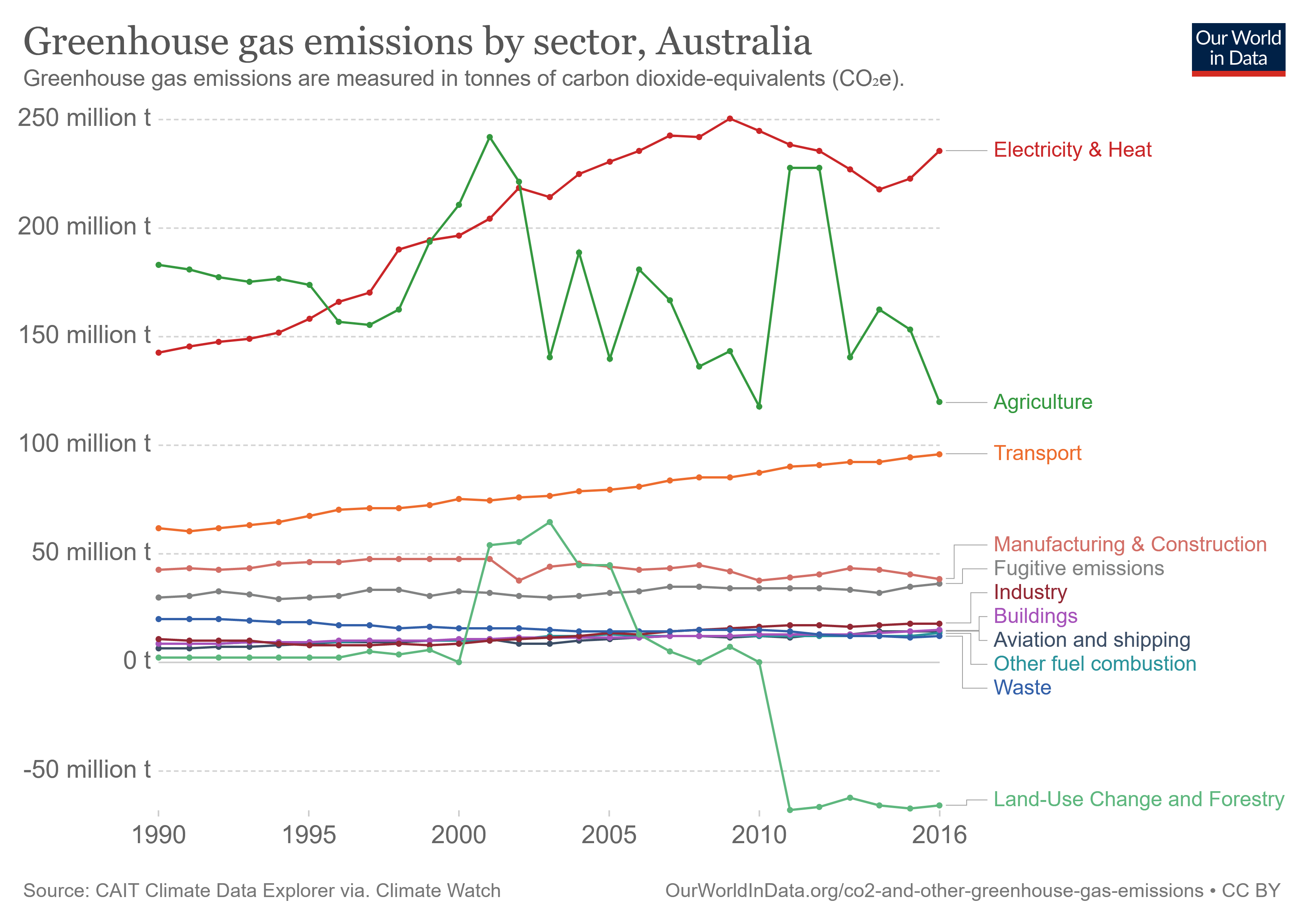tl;dr: Australia's GHG emissions probably declined significantly in 2020 due to COVID-19, but to know if they declined to their lowest since 1990, we'll need to wait until other analysis is available.
How does Australia's counting of Australia's emissions compare to how others count?
Without digging too deep into how the Australian Department of Industry, Science, Energy, and Resources counts emissions, we can see that it diverges significantly from how other agencies are counting. (Note that all three sources below include land use change in their accounting).
- From the Australian government:

- From Climate Watch, via Our World in Data:

- From the EU's emissions tracking agency, via The World Bank:

Notably, Climate Watch and the EU don't show 1990 levels being nearly as high as Australia's own accounting.
Does a record-low 2020 match the trends?
However, the real claim isn't about 1990 specifically -- just that emissions are lower than they've been since 1990. On this count, all three sources agree that emissions are trending downward, and probably within striking range.
This is largely due to two factors which we wouldn't expect to change drastically over the course of a year:
- A shift in primary energy consumption from coal to natural gas, which results in half the emissions per kWh produced than coal.
- Land use, land use change, and forestry.
Both trends are illustrated here:

Could COVID-19 have caused emissions to drop even faster than the trends?
A recent report from the Global Carbon Project tracked the impact of COVID-19 on emissions by country: "Temporary reduction in daily global CO2 emissions during the COVID-19 forced confinement". Here's the sectoral data for Australia:

Transportation and electric power, two of the largest sources of emissions overall, also showed the greatest reduction due to COVID-19, so it's entirely possible that, when combined with declining trends overall, Australia's 2020 emissions did drop to their lowest level since 1990.






